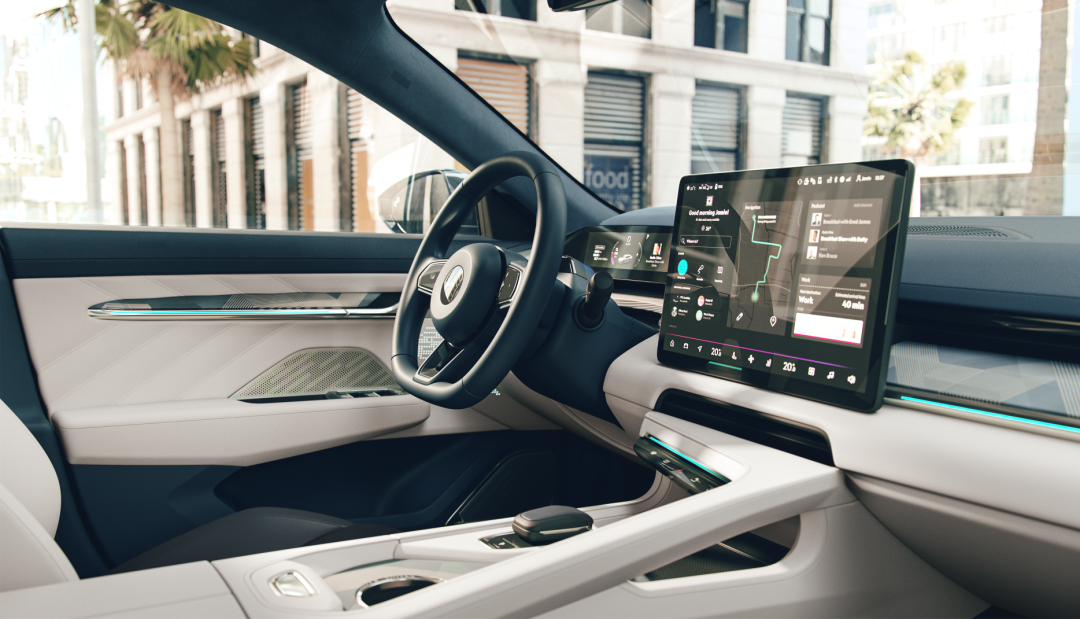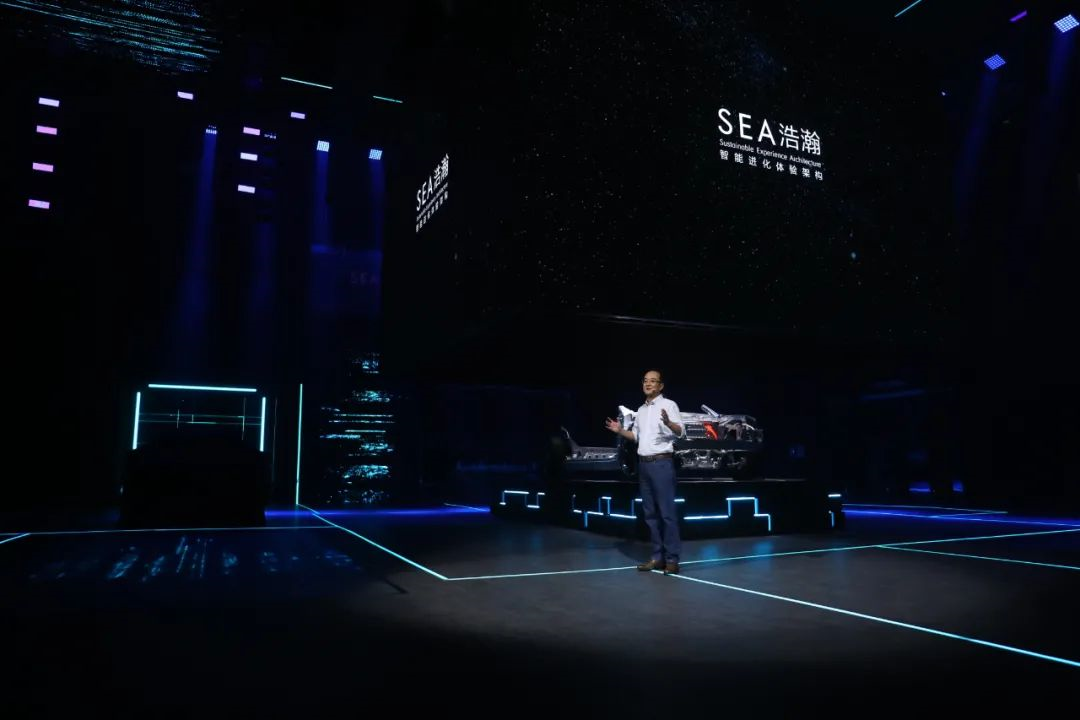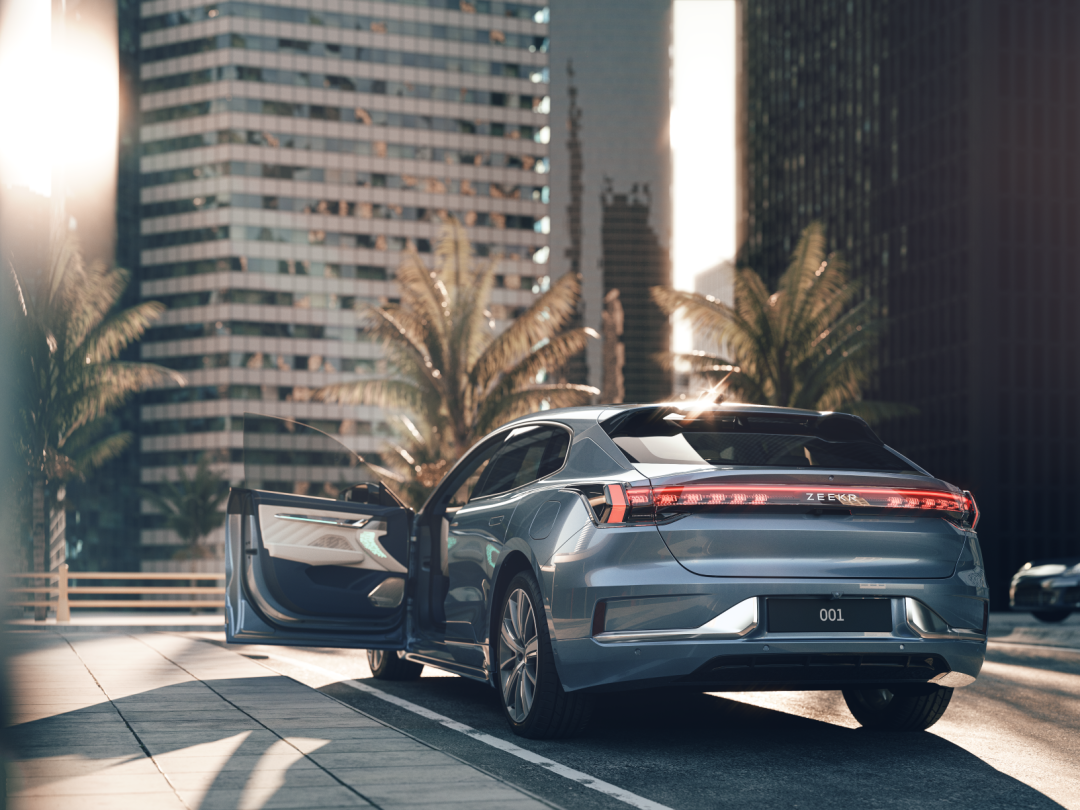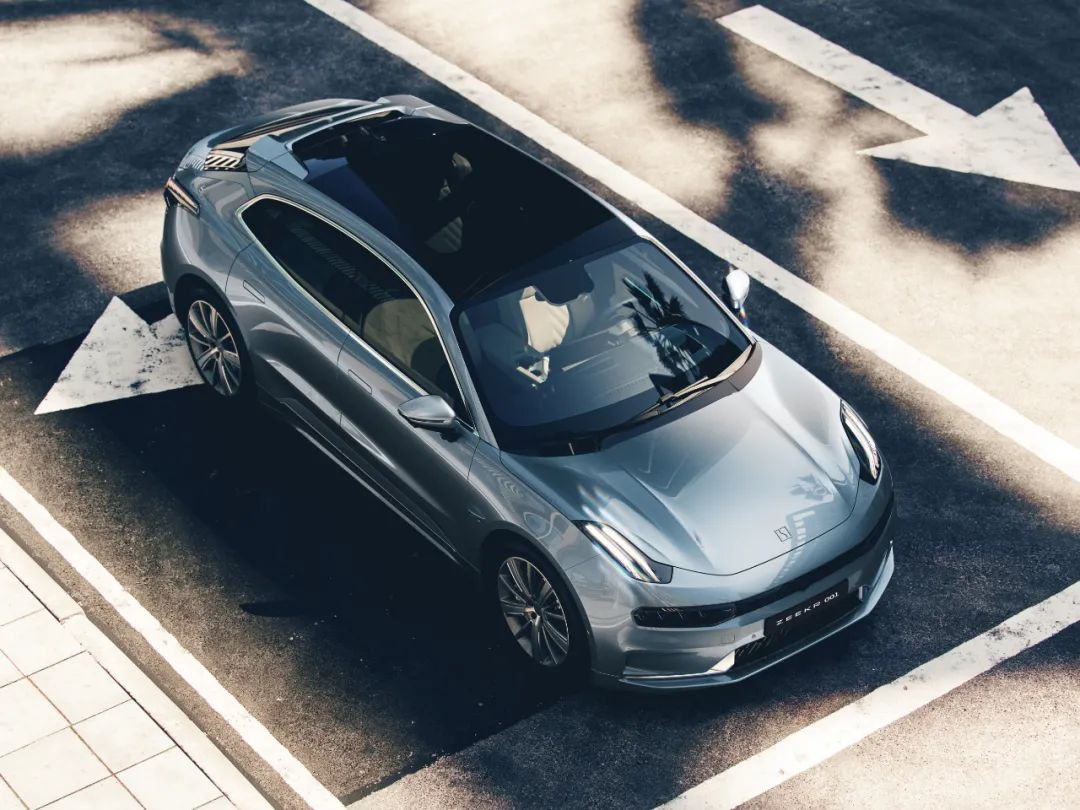*This article is reproduced from the Autocar Weekly public account
Author: Finance Street Old Li
Smart electric vehicles are evolving along with users and technology, and so is Xtreme-K Motors (JiKexin) in China.
Over the past 20 years, there have been two major trends in China’s economic development: consumer upgrading and technological progress. These are reflected in many areas of life. For example, in the consumer goods sector, consumer upgrading has driven the development of sugar-free beverages and the emergence of new brands such as Yuanqi Forest. In the mobile communications sector, technological progress has driven the intelligence of smartphones and the emergence of new technology brands such as Xiaomi.
Compared to fast-moving consumer goods and smartphones, the smart electric vehicle industry has more players, a longer industrial chain, and a more diverse user base. This means that the evolution of smart electric vehicles is much more complex, with many new brands emerging, but few succeeding.
China’s new forces in car manufacturing also keep evolving along with social development. NIO and XPeng are the first-generation new forces in China’s car manufacturing industry. They had no foundation and no burden and built their brands from scratch. Baidu and Xiaomi’s foray into car manufacturing represents the second generation of new forces, with deeper user and brand foundations from the smartphone era and growing influence in the car industry. Zeekrxin is more like a new force on a new track, a revolutionary and pioneering player that not only differentiates from the traditional forces but also from new forces. The company aims to build a new user ecology in the era of smart electric vehicles, by not only establishing a solid technological foundation but also building a brand skyscraper.
Many people ask, why is Xtreme-K Motors a new force on a new track? To answer this question, we need to start with the following three questions: How did Zeekrxin come into existence? Why do users choose Zeekrxin? What can users get from Zeekrxin?
Can the new track do without Zeekrxin?
The essence of this round of consumer upgrading is the change of the main consumer group. According to statistics from the Chinese Academy of Social Sciences, there are currently three generations of people in China: the traditional generation born in the 1950s and 1960s, the transitional generation born in the 1970s and 1980s, and the modern generation born in the 1990s and 2000s. For the past 20 years, the mainstream consumer group in China has been the transitional generation born in the 1970s and 1980s. They are introverted and pragmatic due to their unique growth environment. At the consumption end, they prioritize cost-effectiveness and quality.
We often say that a brand is the impression of a product and service projected in the consumer’s mind. Major car brands maintain their brand image through product and service improvement, such as raising product prices or improving product quality. However, consumers passively accept these changes, and buying a car means the end of their interaction. Therefore, the 70s and 80s generation of users value product quality more, and companies that can provide good products and services are excellent brands. In the era of fossil fuel cars, Volkswagen and Geely, among other car companies, have tapped into the consumption habits of the 70s and 80s generation, and their success is undeniable. Volkswagen and Geely are the best brands in the minds of this generation of consumers.# Modern People’s Changing Viewpoints and the Reshaping of Automotive Brands
The mindset of the post-90s and 00s generations has undergone a huge change. Who are modern people? They strive for independence, freedom, and enjoyment in their lives. They resist the 996 work hour system. In terms of consumption, they value warmth and a sense of participation, and they want to contribute to the brand. We cannot change the trend of consumption upgrade, as it has its own objective laws, just like the developed countries have undergone a similar path. Excellent companies can always grasp the objective laws.
The change in the main consumer group means reshaping, not only of products, but also of brands. The reshaping of products is an inward-to-outward process. The development of electrification and intelligence drives the self-iteration of supply-side in the automotive industry. The reshaping of brands is an outward-to-inward process. The change of the main consumer group means that it’s not feasible for companies to establish their brands with the cognition of the previous generation. Brands need to be reshaped according to the modern people’s cognition of the brand, follow the trend of development and cater to consumer demand.
The definition of an excellent brand has changed for modern people. Buying a car is no longer passive acceptance, it’s the beginning of interaction between users and companies, and even an opportunity to become a brand builder.
There are three competition tracks in the smart electric vehicle race. The representative of the first track is Tesla, NIO, Xpeng, and Ideonics. The secret to the success of these new brands is user interaction. New forces 1.0 have opened up various new models, such as direct sales, to make user interaction with the brand a reality. The second track is represented by Apple, Baidu, and Xiaomi. We still do not know what kind of user relationship new forces 2.0 can achieve. It will take at least two or three years to see and touch it. Different from the first two, Zeekr Auto has created the third track, with Zeekr’s new user ecosystem as the end point. With the release of Zeekr 001, Zeekr has embarked on a new journey.
The birth of NIO and Xpeng enabled users to achieve active interaction, while Zeekr allows users to deeply participate in brand building and create a new user ecosystem. From the perspective of social development, the birth of Zeekr is not Geely’s passive acceptance of the changing times, but rather Geely, as a giant, seizing the opportunity to create excellent brands that modern people need and allowing modern people to become brand builders. This has inevitability and rationality.
Why Should Users Choose Zeekr, a Technological Open Source Brand?
Times change, and companies should adapt. The idea of building a brand is great, but in practice, enterprises need to consider: Why would young people choose their brands among many new brands? This is not only a problem faced by companies like Baidu and Xiaomi, but also a problem that Zeekr has to consider. However, Zeekr seems to have found the answer to the problem – the combination of technology ecology and user ecology.Many people may ask, why the tech ecosystem? The tech ecosystem is the foundation of Jidu’s development. By combining Jidu’s forward-looking user ecosystem concept with the tech ecosystem, Jidu Auto can create excellent products and experiences. In the era of intelligence, the tech ecosystem will directly determine the product and user experience. Similarly, an international brand cannot withstand the test of time and competition without the support of underlying know-how. In the trend of intelligence, the tech ecosystem is the correct answer to enhance brand strength. Without the support of the tech ecosystem, products, services, and experiences are just empty talk.

As the saying goes, proper tools make a good workman. Just as iOS is to Apple and Android is to Google, Geely can be said to be the Chinese automaker with the most know-how. Looking purely at the various technologies of Geely, they are not globally leading, but if one looks at the comprehensiveness, systematization, and forward-looking nature of their technology layout, Geely has the advantage. As the representative enterprise of new forces 2.0, Baidu also took the initiative to cooperate with Geely to develop intelligent electric vehicles, which shows the industry recognition of Geely’s tech ecosystem. The advantage of Jidu over its competitors is largely based on the complete tech ecosystem established through Geely’s years of technology accumulation.
To elaborate Geely’s tech ecosystem is complex, but in brief, it includes underlying systems and intelligent applications. The underlying system refers to the architecture, which is Jidu’s first advantage. We have mentioned the architecture many times, but the more commonplace the issue, the less easy it is to clarify. In the early days of the automotive industry, the architecture was mainly for large-scale cost reduction. As the product cycle of cars is long and users do not change product functions once the cars are in their hands, the architecture is not that important, whether it is forward or reverse development.

Nowadays, the industry advocates for user-defined experiences, and users are involved in product functional development. At this time, the importance of architecture is greatly enhanced. Intelligent architecture can help enterprises decouple and shorten the product iteration cycle. For example, the vehicles developed by companies without intelligent architecture are like old mobile phones, while the vehicles developed based on intelligent architecture are like smartphones. Architecture is somewhat like a user-definable phone operating system. Based on a vast architecture, Jidu has the underlying tech ecosystem.In order to unleash new experiences, the technology ecosystem needs to be combined with the user ecosystem. Users can define various parameters of the vehicle according to their own needs under the intelligent architecture of Jidu, such as power, acceleration, and function matching in the domain of vehicle participation adjustment. The vehicle is like an advanced Rubik’s cube, and a thousand users can adjust it into a thousand different modes. Jidu users truly participate in the creation of the vehicle, which is a move from brand interaction to brand participation.
The second major advantage of Jidu is intelligent applications. Based on the underlying system of intelligent architecture, Jidu can provide application functions based on various needs of users, such as intelligent driving and intelligent cockpit. Thanks to Jidu’s technology ecosystem, it has the ability to efficiently integrate the most valuable resources in the huge industry ecosystem, as well as to ensure the purest user thinking in the form of user enterprises, and to promote the continuous evolution of products and services in a mutually stimulating manner. This will be an unprecedented competitive advantage, helping Jidu to achieve rapid breakthroughs. Especially with the deepening of cooperation among Geely Group’s various brands, perhaps one day Volvo’s intelligent driving technology will be applied to Jidu cars, and Jidu will become the safest car under urban road conditions, just like Volvo.
In the future, Jidu’s intelligent driving technology will add many user settings. Users can define intelligent driving or intelligent cockpit functions according to their preferences. Users can also interact with each other through communities or developer conferences, and participate deeply in the development of vehicles, becoming product and brand builders.
It is the underlying architecture and intelligent application that build the brand foundation for Jidu cars, which is why Jidu is called a new force in car-making, rather than a New Energy Vehicle 1.0, or New Energy Vehicle 2.0.
In the glorious 20 years of fuel cars, people felt that automobile brands lacked warmth, which was the era of Toyota and Volkswagen, as well as the era of the 70s and 80s as the main consumer groups. Under the dealer model, there is no direct interaction between users and automobile manufacturers, and users do not need to interact with automobile manufacturers. As long as the enterprise can provide high-quality products and meet user expectations, it is an excellent brand.
Consumer upgrades and technological progress have prompted both traditional car companies and new forces to think about new types of user relationships. Looking back on the past, two brands have epoch-making significance: NIO, which represents new forces, and Lynk & Co, which represents traditional car companies.# Introduction
NIO and LYNK & CO have created a new type of user relationship that enables users to feel the warmth of the brand. With deep interaction between users and brands, NIO users recognize NIO, while LYNK & CO users recognize LYNK & CO. New communities and business models such as NIO APP, LYNK & CO APP, and LYNK & CO Partners have emerged one after another. With the support of brand resources, automakers not only solve practical problems for users, but also enhance communication among users. There is warmth because there is interaction.

LYNK & CO
The creation of a new brand is a remarkable endeavor. LYNK & CO’s car owners are referred to as “Co Customers.” At the 2020 Co Customer Conference, LYNK & CO released the Co Customer Ecological Insight, which showed that the first circle of young users had formed, with 90s users accounting for as much as 40%, and 85s plus 90s users accounting for more than two-thirds. Another finding was that LYNK & CO has high word-of-mouth among its users, with 71% being willing to introduce and recommend LYNK & CO products to their family and friends. Many “dual-car families” and “multi-car companies” have emerged in the user groups. These data demonstrate that users are willing to interact with new brands, and that user relationships are continuing to develop. Most importantly, LYNK & CO’s success will bring significant benefits to other companies that operate similarly.
JIDU Auto
In the era of intelligent electric vehicles, it is not enough for a brand to have warmth alone. The brand should also provide users with a sense of participation. One statistic to consider is that the frequency of user experience in LYNK & CO cars is increasing, and the interaction between LYNK & CO car owners and the smart assistant system is also continuing to grow. This suggests that users have strong desires to participate in vehicle development, and that a solid foundation has been set for user participation in brand building. This is in fact the important background for the creation of JIDU Auto.
If a brand can achieve warmth, a car company can be rated 60. Currently, NIO and LYNK & CO have both achieved this level. If a brand can achieve a sense of participation, and enable users to become developers of the brand and products, forming a new type of user ecosystem, a car company can be rated 100. This is the direction that JIDU Auto is headed in. Users have a need to participate and create, and JIDU Auto has an open-minded technological ecosystem and user-centric thinking. Achieving a rating of 100 is only a matter of time. From this perspective, JIDU Auto is taking LYNK & CO a step further.
A successful enterprise not only needs to have know-how and technological support, but also requires its founders to launch a brand that meets the needs of the times with unique values and a user perspective. From LYNK & CO to JIDU Auto, this is what users expect to see.
This article is a translation by ChatGPT of a Chinese report from 42HOW. If you have any questions about it, please email bd@42how.com.
